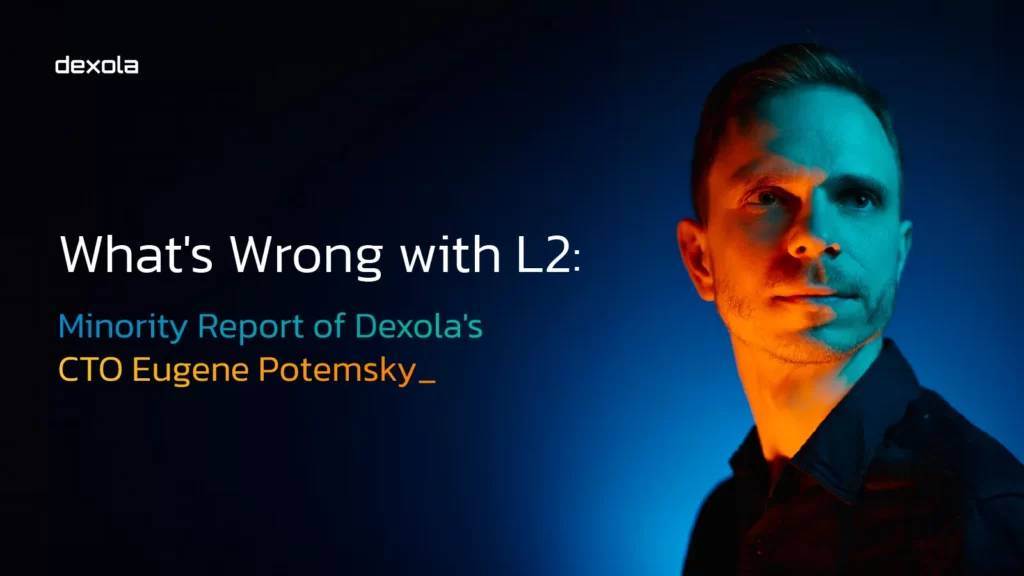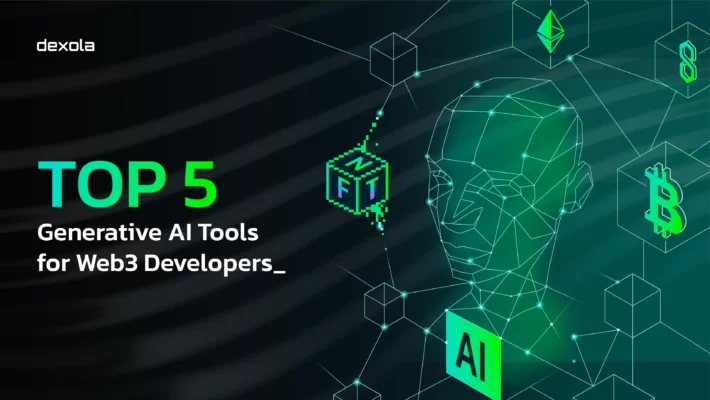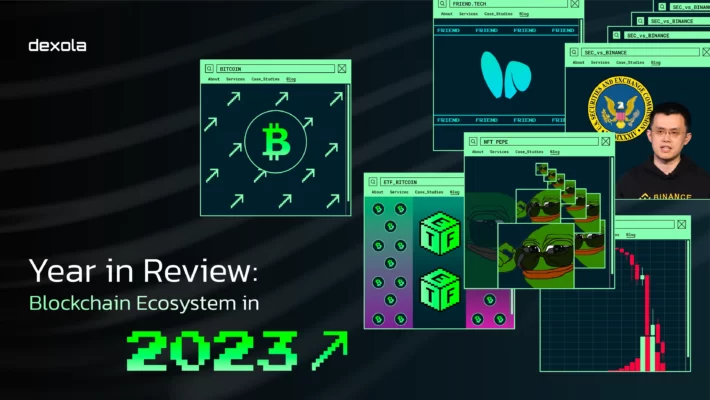What’s Wrong with Blockchain Layer 2 Solutions: Minority Report of Dexola’s CTO Eugene Potemsky

Eugene Potemsky is the Chief Technical Officer and Co-Founder of Dexola, a technical consulting & software development company experienced in the blockchain industry. Under his visionary leadership, the firm transformed from a modest ten-member team to a powerhouse with more than 30 blockchain developers. He is also known as an ambitious entrepreneur who played a crucial role in signing a long-term partnership agreement with global digital holding Trinetix Inc.
Eugene has been at the forefront of Web3 and blockchain innovations for 7 years. Serving as the CTO and founder of several fintech startups since early 2017, he has accumulated vast expertise both in DeFi technologies and corporate strategy.
Eugene believes that not all technical solutions benefit businesses. In this write-up, he shares his perspective on why Layer 2 technology sometimes might create more challenges for projects than offer advantages.
At Dexola, we are convinced that Layer 2 (L2) networks are great and disruptive in a technical sense. If the Layer 1 (L1) network can not handle all transactions and computations, it is profitable to outsource them to a faster and cheaper L2 network and execute them there.
However, when our team was working on real cases we found out that sometimes this technology works differently at the business level compared to what our clients were expecting to end up with.
I have a feeling that the problem stems from the public misconception of how L2 is related to L1. So I’d like to focus on some L2 downsides you should keep in mind before choosing the L2 solution for your business.
What are Layer 1 and Layer 2 Networks?
L1 networks are “original” chains that are on their own. These are Bitcoin, Bitcoin Cash, Ethereum, Solana, NEAR, and hundreds more.
L2 networks are built on top of L1 networks. Devs have to implement special smart contracts for bridging assets between them.
L1 networks are slow, crowded, have expensive gas fees, and they are well secured. L2 networks have higher throughput, faster transaction finalization, and cheap fees.
In numbers: a simple ETH to USDT swap on Ethereum might cost up to $10 in gas fees. A decentralized perpetual futures trading with all necessary mechanics like limit orders and funding rates on Optimism might cost $0,01 in gas fees for each trade.
Technically, the layers are interdependent — L2 relies on L1. But from a business perspective, they work as independent networks, not just like a simple extension of one by another.
Pitfalls of migration from L1 to L2
Not Automatically Convertible. You can’t directly swap ETH on the Ethereum network for USDT on Arbitrum or Optimism since ETH on L1 and on L2 are not fungible by default. Before swapping you need to bridge your assets to L2.
L2s are cheap, but bridging liquidity is not. Bridging is sending tokens to a deposit smart contract on L1, so the withdrawal contract on L2 will mint the same amount of “wrapped” tokens you can use on L2. But bridging is not a free operation, it costs some money for users. In fact, projects that would like to migrate to Arbitrum or Optimism often ignore this type of spending while calculating the profit.
dApp migration to an L2 is complicated. Just to migrate a simple ERC-20 token as a project owner you need to make a snapshot of your customers, i.e. a list of all addresses that hold the token on L1, then deploy the same contract on L2 and mint the token to addresses in a list. All that takes time and costs money.
You have to convince your users to migrate with you. It is the same as closing the business in the US, opening it in the UK, and convincing the customers to go to the UK with you and swap their USD for GBP. Even if the initial token holders want to leave the project and sell all the tokens after migration, they need to wrap some ETH gas to do that on the L2 network. Imagine the level of disappointment of the project’s ex-fans that wanted to avoid L2 by all means but due to your decision, they still should deal with it!
The risk of price volatility. If the project management wants to completely switch from Ethereum to Arbitrum, they need to extract all the liquidity of L1 token from trading platforms. Usually, teams provide the major volume of liquidity for clients. However, some retail token providers might not leave L1 Uniswap, for instance. It means that the project team can’t commit full exit on Ethereum and because of some liquidity leftovers the price of the token can go extremely up and down with a huge slippage.
What about Scaling a Project on L2?
While migrating means transferring users, liquidity, and contracts from L1 to L2, scaling means deploying the same contracts on L2 and expanding the user base and liquidity.
Those who would like to use your project with cheaper fees and faster transactions will decide to bridge their assets to L2. Those comfortable with L1 will continue using it. In business terms, scaling is just expanding your product to other countries without moving the headquarters.
To Migrate or to Scale?
There are two types of projects that will definitely benefit from L2s: blockchain games with fast gameplay, that require making transactions at least every minute, or derivative trading platforms, that need price updates every second or so. It’s impossible to trade profitably on most L1s with 20–30 TPS.
On the other hand, any decentralized project can be scaled to an L2 network, either a public one or a custom one. With such a move the project would not force users to bridge their liquidity but provide faster and cheaper transactions to those who need it.
At Dexola, we recognize all the technical advantages of L2 infrastructure and help business owners to get maximum from the technology. Yet, it’s important to have coherent and realistic expectations on how L2 solutions actually work at the business level.


